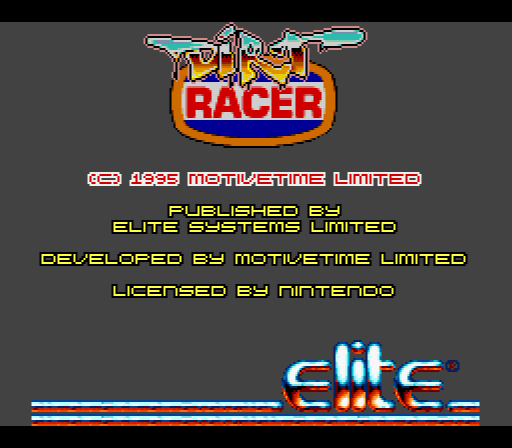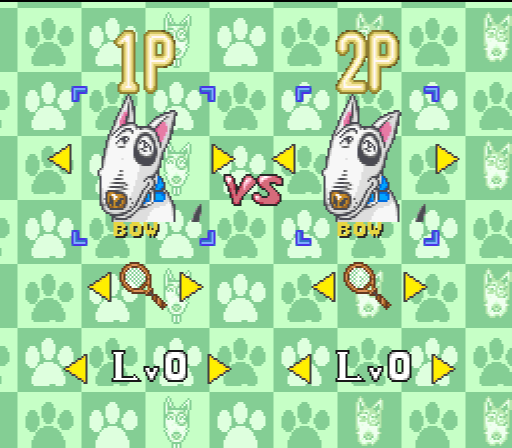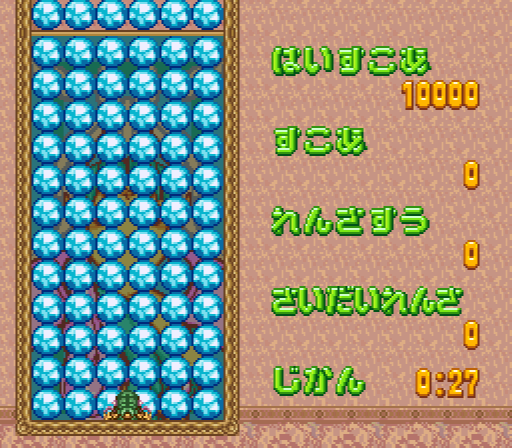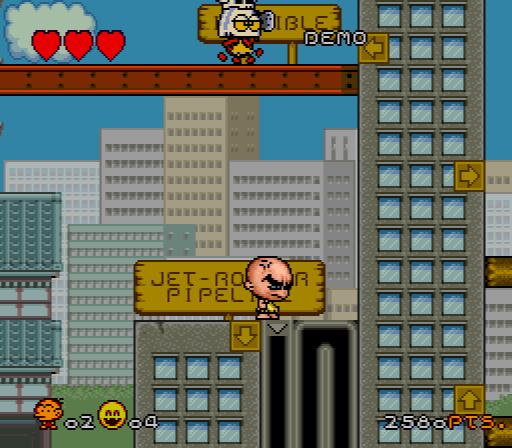SNES Game Bugs2019-09-28
These are bugs that exist in SNES games and which occur even on original hardware.
Dirt Racer
This game will freeze on the startup splash screen sometimes when SNES WRAM contains zero bits in certain locations.
SNES WRAM is non-deterministic at startup, and so there is a chance this bug will occur on real hardware.
Heisei Inu Monogatari: Bow Pop'n Smash!!
When choosing Taisen mode, there is a flickering black line at the top of the screen. This line is usually cut off by CRT television overscan, but can be seen with video capture card devices.
What happens is the game takes too long during certain Vblank sequences and misses the start of the next frame, enabling the display one scanline too late, but only occasionally, hence the flickering.
Hurricanes, The
During the attract sequence for level 12, sometimes a row of bad tiles are seen in the above scene in the background.
This is caused by the game not initializing WRAM before transferring data into VRAM for BG2. If an emulator randomizes RAM at startup as real hardware would, this bug will be seen under emulation.
The bug has a random chance of occurring on original hardware.
Magical Drop
In Tokoton mode, losing the game will sometimes soft-lock, preventing you from entering your initials and then trying again.
This bug is caused by the game not initializing the SNES DSP registers at startup. The register values are non-deterministic at SNES startup, and when the wrong value ends up in certain registers (PITCH and ENVX), this bug will surface.
This bug is somewhat uncommon to trigger on a real SNES, but multiple confirmations have shown that it can and does happen on real hardware.
Super Bonk
During the attract sequence, there is a chance that the scripted input sequence will become desynchronized, and Bonk will get stuck in front of the jet-roller pipeline sign.
This happens due to the natural variance in the SNES CPU and APU oscillators.
Depending on the SNES, the attract sequence will either always work correctly, always break, or only periodically break. We've seen all three in practice.
As emulators are deterministic in nature (for the sake of tool-assisted speedruns and bug reproducability), this bug is likely to either always occur or never occur under emulation.




